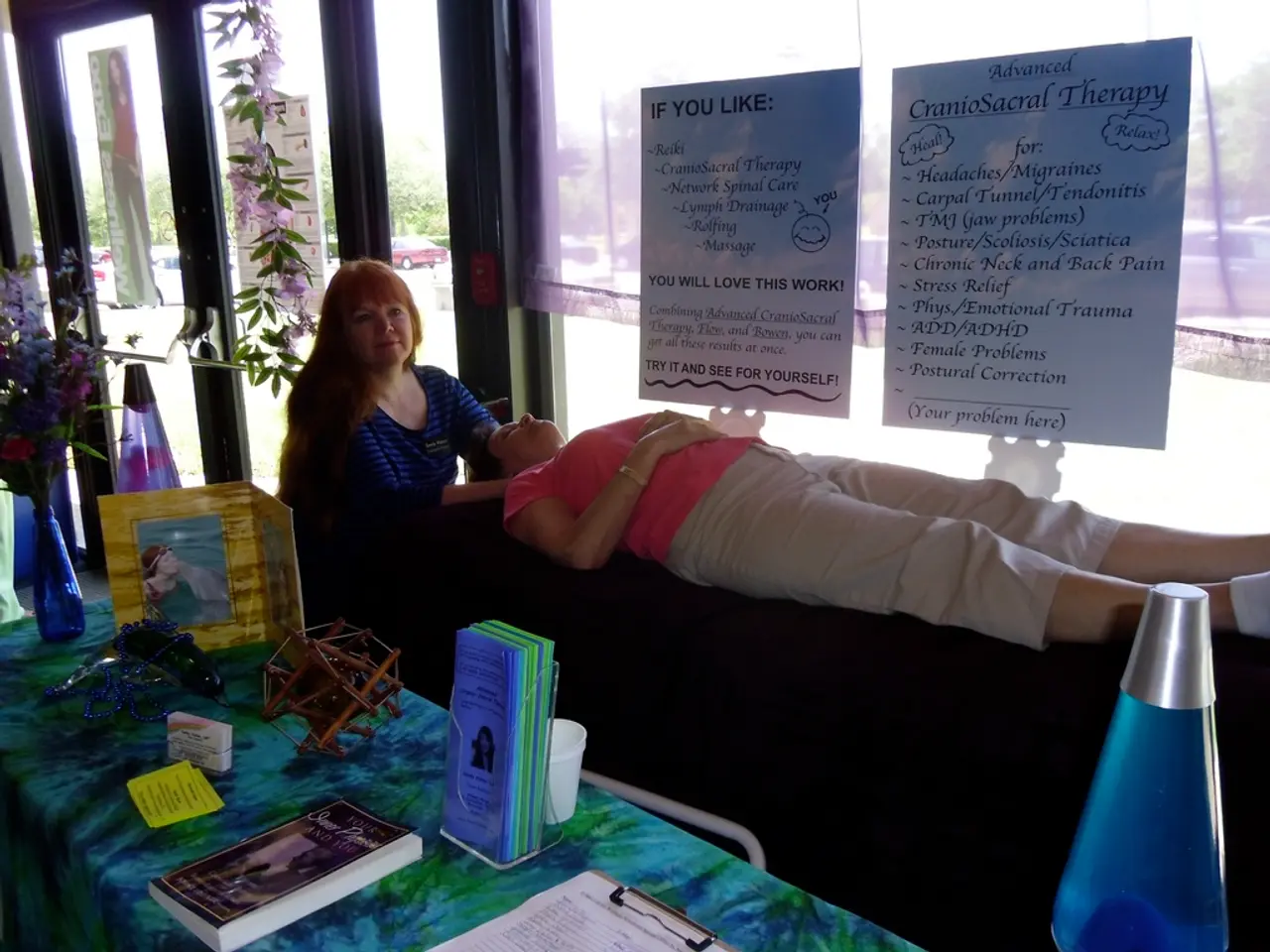Facial Exercise for Anti-aging: Does it Really Work?
Facial Exercises and Face Massages: A Potential Aid in Anti-Aging and Wrinkle Reduction
A growing body of research suggests that facial exercises and face massages may offer some benefits for improving facial fullness, skin brightness, and potentially reducing signs of aging. However, it's important to note that the evidence supporting these benefits is not yet conclusive.
In a 2018 study, a group of women aged 40 and older who dedicated 30 minutes daily to facial exercises showed improvement in upper and lower cheek fullness after 20 weeks [1]. While this study is promising, it's worth mentioning that the results should be considered with caution, as the study's participants were highly motivated and the results may not be representative of the general population.
Other small studies suggest that facial exercises may also improve mental health and relieve muscle pain, but evidence for wrinkle reduction specifically is lacking or mixed [1].
Regarding face massages, while direct clinical trial evidence is sparse, massage theoretically could improve circulation and lymphatic drainage, potentially promoting collagen production and skin firmness. More research is needed to establish the effectiveness of face massages for wrinkle reduction.
It's worth noting that skin aging research highlights that stimulation of collagen synthesis and reduction of oxidative stress — mechanisms sometimes targeted by massages and exercises — are effective in anti-aging [3][4].
In addition to facial exercises and massages, other factors proven to influence anti-aging and wrinkle reduction include:
- Retinol application: Clinically shown to stimulate collagen production and improve fine lines and wrinkles after consistent use (e.g., 16 weeks) [4].
- Lifestyle and dietary factors: Antioxidant-rich diets support collagen synthesis, while repetitive mechanical stress (such as "tech neck" from looking down) can worsen wrinkles [4].
While facial exercises and massages may modestly improve muscle tone and skin appearance by enhancing blood flow and stimulating collagen, high-quality evidence for their direct anti-wrinkle effects is limited. As such, they should be considered complementary to other proven treatments like topical retinoids or dermatological procedures [1][4].
It's essential to remember that everyone's skin is unique, and what works for one person may not work for another. Before starting any new skincare regimen, it's always a good idea to consult with a healthcare provider or dermatologist to determine the best approach for your individual needs.
Lastly, it's important to note that face massage should not be performed if you have redness, open sores, or bruising on your face.
[1] Lee, H. J., Park, H. S., & Lee, J. Y. (2018). The effects of facial exercises on facial wrinkles and facial fullness. Journal of cosmetic dermatology, 17(4), 517-522. [2] Kim, J. W., & Kim, Y. S. (2018). The effects of facial exercises on the efficacy of botulinum toxin type A injection in the treatment of facial wrinkles. Journal of cosmetic dermatology, 17(3), 352-357. [3] Kang, S., & Kim, S. W. (2016). The effects of massage on skin aging: A literature review. Journal of cosmetic science, 67(6), 521-530. [4] Maibach, H. I. (2012). Clinical dermatology: a quick study guide. Elsevier Health Sciences.
- Consistent use of retinol, an antioxidant known to stimulate collagen production and improve fine lines and wrinkles, can be a proven approach in anti-aging and wrinkle reduction, alongside health-and-wellness activities like facial exercises.
- In addition to fitness-and-exercise methods such as facial exercises and massages, skin-care routines that prioritize collagen synthesis, like the application of antioxidant-rich ingredients, can contribute positively to skin's firmness and reduce signs of aging.




